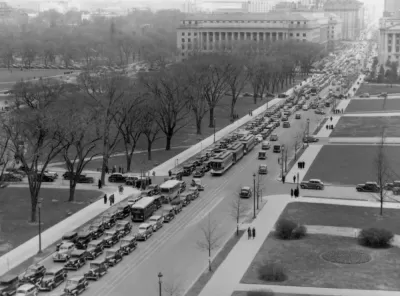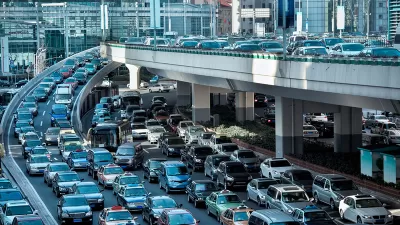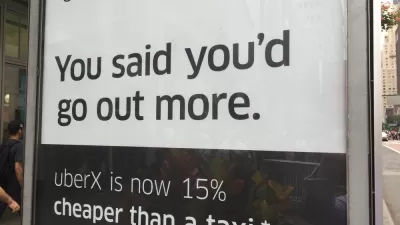The District of Columbia is attempting to build a data-based model for the mix of public and "shared" transportation modes on its streets, but is still finding holes in the data necessary to build new policies.

Ride hailing has exploded in the Washington, D.C. market on the same timeline as a steady decline in taxi ridership, according to recently released data.
"New figures provided by the office of D.C. Mayor Muriel E. Bowser (D) show that taxi ridership has fallen 31 percent, or about 6 million trips, since the ride-hailing boom began in late 2015," reports Faiz Siddiqui. A ride-hailing surcharge is already generating as much funding as taxis did in 2015, showing further evidence of steady growth in ride-hailing services.
The increased use of ride-hailing also explains why Mayor Bowser has targeted the industry for increased taxes—beyond the 1 percent surcharge currently in place to 4.75 percent.
For context, Siddiqui notes the multiple studies in recent months that tie ride-hailing adoption to increased congestion and decreased transit ridership. But the real story is about the District's efforts to set transportation policy while also working to fill the holes in the available data about how people are traveling its streets. While programs like Uber Movement and SharedStreets (check out Coord for a non-Uber example of curb data platforms) have helped to some extent, the District and other cities around the country still lack a lot of information about average fares and total trips.
FULL STORY: As ride hailing booms in D.C., it’s not just eating into the taxi market — it’s increasing vehicle trips

Alabama: Trump Terminates Settlements for Black Communities Harmed By Raw Sewage
Trump deemed the landmark civil rights agreement “illegal DEI and environmental justice policy.”

Planetizen Federal Action Tracker
A weekly monitor of how Trump’s orders and actions are impacting planners and planning in America.

The 120 Year Old Tiny Home Villages That Sheltered San Francisco’s Earthquake Refugees
More than a century ago, San Francisco mobilized to house thousands of residents displaced by the 1906 earthquake. Could their strategy offer a model for the present?

In Both Crashes and Crime, Public Transportation is Far Safer than Driving
Contrary to popular assumptions, public transportation has far lower crash and crime rates than automobile travel. For safer communities, improve and encourage transit travel.

Report: Zoning Reforms Should Complement Nashville’s Ambitious Transit Plan
Without reform, restrictive zoning codes will limit the impact of the city’s planned transit expansion and could exclude some of the residents who depend on transit the most.

Judge Orders Release of Frozen IRA, IIJA Funding
The decision is a victory for environmental groups who charged that freezing funds for critical infrastructure and disaster response programs caused “real and irreparable harm” to communities.
Urban Design for Planners 1: Software Tools
This six-course series explores essential urban design concepts using open source software and equips planners with the tools they need to participate fully in the urban design process.
Planning for Universal Design
Learn the tools for implementing Universal Design in planning regulations.
Clanton & Associates, Inc.
Jessamine County Fiscal Court
Institute for Housing and Urban Development Studies (IHS)
City of Grandview
Harvard GSD Executive Education
Toledo-Lucas County Plan Commissions
Salt Lake City
NYU Wagner Graduate School of Public Service





























